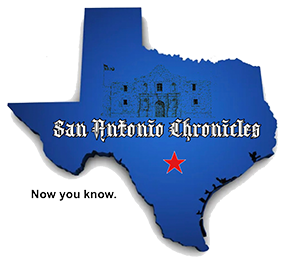Within the weeks after a heavy June 12 rain swept a number of automobiles off the street in San Antonio leaving 13 individuals useless, native officers say an investigation has uncovered some comparatively low value security measures that may very well be carried out shortly to stop such tragedies sooner or later.
On Tuesday, Bexar County Commissioners permitted roughly $10 million to repair and enhance rain gauges at low-water crossings, replace flood projections and set up gates that officers can proactively shut when water is anticipated to rise above the roadway.
The enhancements are anticipated to be accomplished in a couple of yr, with an final objective of automating the gates to reply on their very own in instances of heavy rainfall.
Such swift motion comes as Bexar County leaders have been carefully watching the fallout from Kerrville’s flooding, throughout which prime elected leaders and regulation enforcement officers have been criticized for being asleep or out of city as greater than 130 individuals have been killed by catastrophic rainfall.
“The evaluate has been fairly brutal,” Bexar County Decide Peter Sakai stated of the Texas Legislature’s investigation into the occasions in Kerrville.
“It has jogged my memory what my main job as county choose is, and that’s to guard this county,” he continued. “I higher rattling nicely guarantee that if there’s any climate occasions or catastrophic occasions … I higher be up and at them.”
Bexar County is already in a wildly completely different place from Kerr County as a result of a collection of dams put in place a long time in the past that function autonomously and gradual raging water.
There are 28 of them inside the county and 14 elsewhere downstream — however not one on Beitel Creek, the place a lot of the casualties occurred on June 12.

Whereas dams are an costly, long-term resolution, Steve Metzler, director of water assets on the San Antonio River Authority, stated that different water administration businesses throughout the nation have had some success utilizing gauges and gates to extra shortly deal with lack of life points in dramatic flood conditions.
“Harris County Flood Management District in Houston had an identical setup to what we now have now, the place we deal with rain gauges, and so they switched to a stream gauge system to hurry up response time,” stated Metzler, whose company will oversee the venture in Bexar County. “That’s what we’re trying to change to, so there’s a precedent for it.”
San Antonio River Authority can also be planning to satisfy with the Colorado River Authority, which has comparable know-how in use.
Tuesday’s Commissioners Court docket assembly included a prolonged dialogue of whether or not cash must be used on different approaches, reminiscent of creating an Amber Alert-type warning for drivers close to flood conditions — or a extra wholesale shift of county assets to account for flood infrastructure wants.
Some critics even argued that plans to boost the county’s venue tax to assist pay for a brand new NBA area must be sidelined till leaders deal with the urgent flood management wants in one of the flood-prone areas of the nation.
However the plan for gauges and gates was permitted unanimously, and County Supervisor David Smith vowed to seek out cash on this yr’s finances — even when it means doubling the county’s contribution to make up for the Metropolis of San Antonio’s anticipated portion of the invoice.
“I would like [San Antonio River Authority General Manager Derek Boese] to stroll out of this assembly and get to work,” Smith stated. “So that you’re going to have your cash a technique or one other.”
A regional strategy
Boese, who beforehand managed hurricane protection efforts in New Orleans after Hurricane Katrina, truly has a lot greater plans for San Antonio’s watershed.
“Water doesn’t care about political boundaries,” he stated in a current interview with the Report. “That’s why [water management strategy is] constructed on the watershed foundation.”

Although state officers have largely agreed with that sentiment, funding initiatives that means is extra sophisticated.
Boese chairs a regional flood planning group that features components of Bandera, Wilson, Karnes and Goliad counties, arrange after Hurricane Harvey by the Texas Water Growth Board, which made the San Antonio River Authority its administrator.
“The state has offered funding primarily for knowledge assortment and a few fundamental evaluation up up to now,” Boese stated of the regional flood teams.
However these current tragedies will quickly check whether or not lawmakers are keen to place actual cash behind the options they’ve give you.
The San Antonio River Authority has recognized 95 gauge areas wanted within the area’s southern basin — exterior of Bexar County — totaling about $33 million. Moreover, Boese stated, there are 4 northern counties with streams feeding into Bexar County, however that aren’t included in San Antonio’s Area 12.
Flood warning techniques and catastrophe preparedness are on lawmakers’ agenda for a the particular legislative session, and Boese stated his company has requested the legislature to cowl that remaining portion of the work.
However the Texas Water Growth Board hasn’t deemed a lot of this area’s initiatives a excessive precedence lately, Boese stated, partly as a result of “we’re far forward of nearly all people else within the state by way of having knowledge, having evaluation, and understanding what flood plains are.”
Of the roughly $670 million distributed by means of its Flood Infrastructure Fund, simply two Area 12 initiatives have been chosen: $5.4 million drainage enhancements in Bandera County and a $600,000 flood safety research in Karnes County.
“We’re in ongoing discussions with the Water Growth Board about how we will enhance our possibilities, and why we didn’t see any funding [in the last round],” Boese stated.





